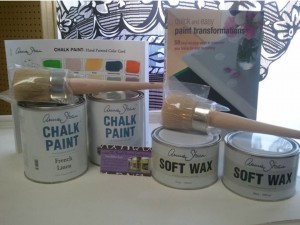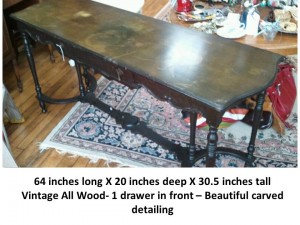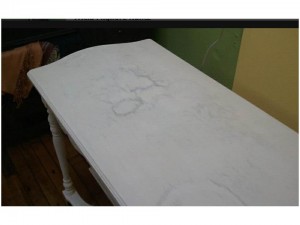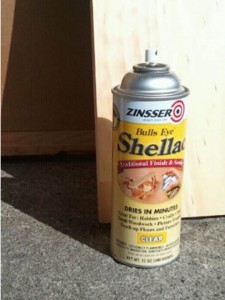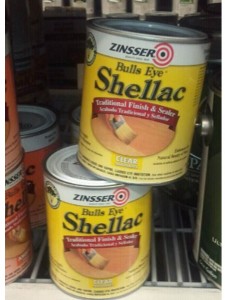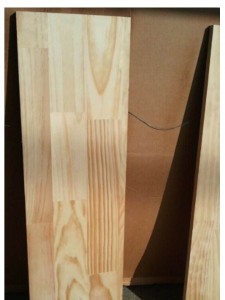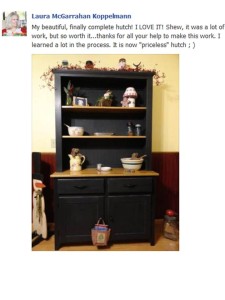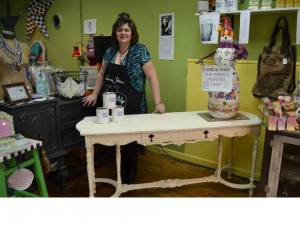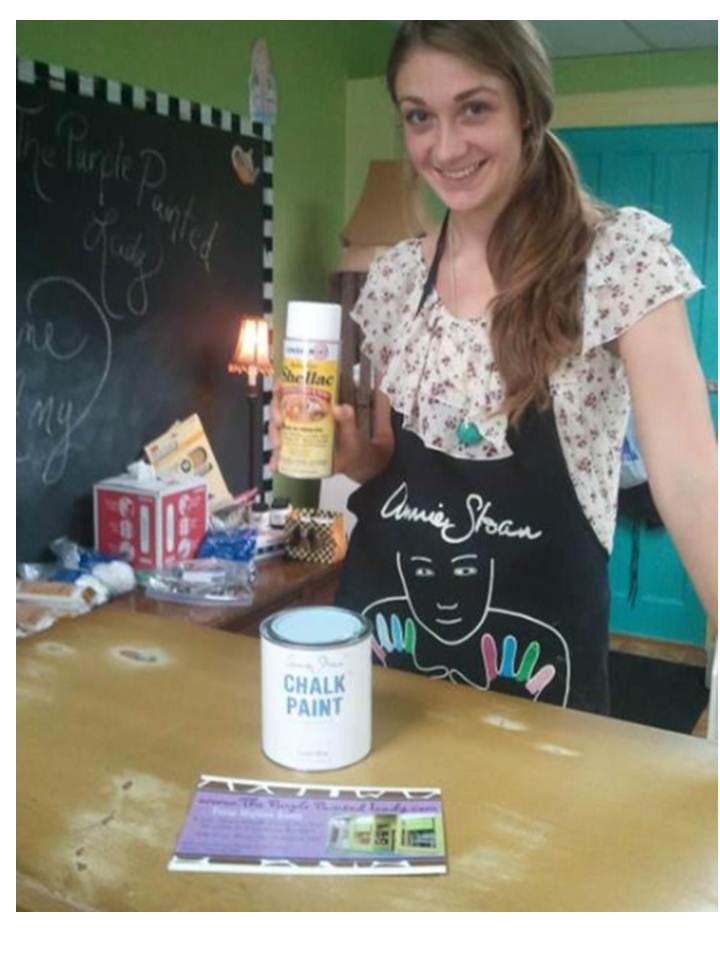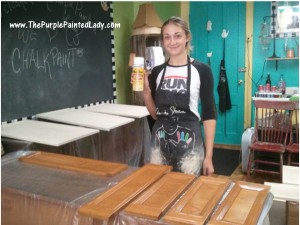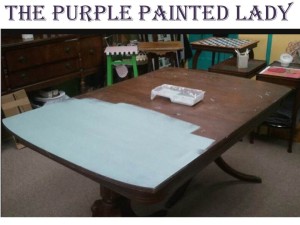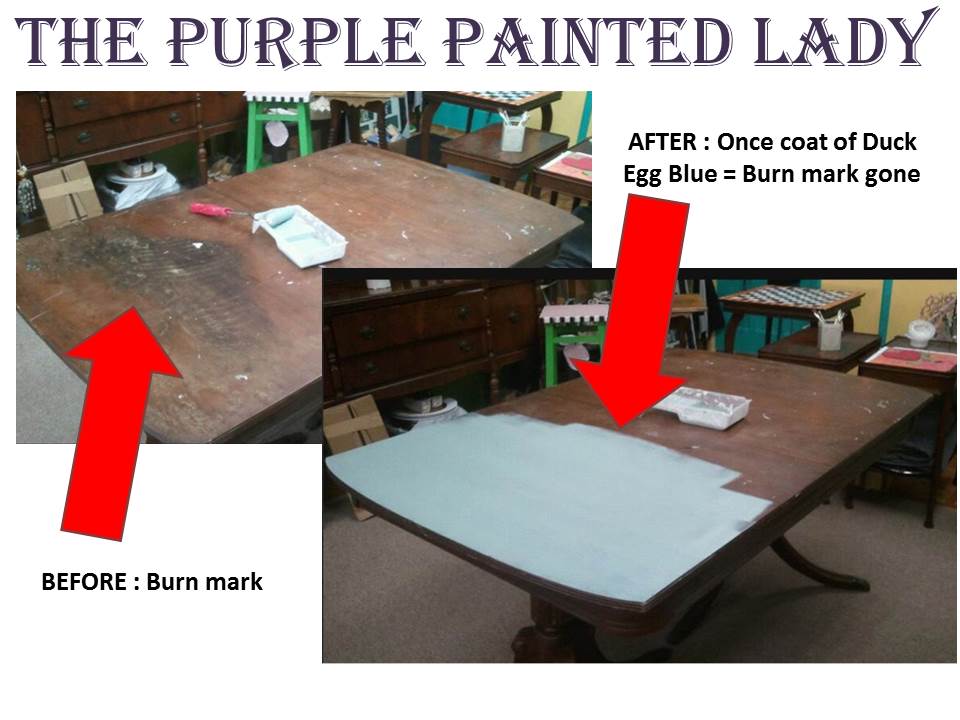Hi all! We have the Ultimate Wax Brush available here on our site and if you need one- click here).
SHORT CUT to VIDEO! Click here to watch it.
If you have ever met me in person or talked with me on the phone regarding wax- you will know that I feel an Ultimate Wax Brush is worth its weight in gold when it comes to applying furniture wax. I feel it helps you to apply a uniformed application of wax, and guides you to push the wax into the paint. Often, those who are beginners and use a rag will have issues such as streaking due to uneven application. Since this post is about how to maintain your Ultimate Wax Brush, if you would like to read more about how to apply wax- jump to the end of this post. : )
With all shipments of product that you purchase from The Purple Painted Lady – you will receive an instruction sheet on everything! Not just a page with some high level itemized notes, but typically 2 pages worth of information! When it comes to cleaning your Ultimate Wax Brush- it is only a 1 page sheet because it is quite simple. I also have a quick video if you would rather hear me talk about it, click here to watch it. Please pardon my lack of “hair & make up.) We filmed this after working 13 hours at the shop last Thursday.
Here is some other “WAX” information & posts that I hope are helpful to you:
Wax seems to cause the most confusion for customers… So, I hope the following is helpful for you!:
How Much Wax Do I apply?
If all you take away from what I say and do is this…you will be ok! We are not icing a cake! We are waxing furniture. So, very thin – uniform coats are best. Just like when you put moisturizer on your skin- you do not put a thick coat on, but rather a THIN coat and rub it in- so that it will be absorbed into your skin. OR when you use hair conditioner…you apply it and then do what? Rinse it off. That is because your hair will absorb what it needs. Annie’s Chalk Paint will do the same thing in regards to the wax! And you should never have so much wax on your brush that it is “caked” up the sides. You are using too much wax and more importantly- wasting your wax.
CLEAR WAX- this is how The Purple Painted Lady uses it:
1. I take a plastic spoon and a paper plate. Using the backside of the spoon- I take a good tablespoon amount of wax out of the tin and put it on the paper plate. (Place the cover back on the tin of wax until you need more)
2. I use my wax brush and pull some of the wax from the glob (for lack of better words.) Only the tips of your wax brush bristles should have wax on them- there should not be wax “gobbed” up the side of the brush. A little goes a long way! Again- you are not icing a cake where you want a generous amount of thickness. We are applying the wax very thin- pressing uniformly with steady pressure- but not so much that you are bending the bristles on the wax brush. I like to use the analogy that this is similar to waxing your car…you apply the wax- BUT NOT SO MUCH that when it is time to wipe it off or buff- you need a power tool to do it! So- apply a thin layer of wax and GET IT IN THE GROOVES OF THE PAINT.
3. APPLY WAX IN SECTIONS: I work in about 1 foot sections … I use a circular motion when applying the Clear Wax. Then after applying the wax, I rub the wax into my piece and wipe the residual wax off with a lint free cotton rag or piece of cheese cloth. I ALWAYS finish with a few clean straight wipes with my rag in the direction I painted. If I was doing a dresser top- I would start at the back reaching across while standing in front of the piece and as I apply the Annie Sloan wax – I work my way toward the front as so I don’t lean into a previously waxed area. You will see where you waxed prior because it does deepen the hue of the paint a slight amount but be aware of where you just waxed. 4. WIPE OFF WAX: After applying the wax to one section, I will notice when the wax is not covering as much- that is my queue I need more wax. But before reloading your wax brush….use a lint free cotton t-shirt (an old one from my husband or an old sheet) and I wipe off the residual wax with a couple wipes ..circular or in the same direction as I just waxed. (I am not buffing the wax at this stage! Merely just removing or incorporating any small wax “crumbs” that may be present.) Again- a few uniformed swipes or circular rubbing – and that is it.
5. Resume waxing the next area- I wax strategically – meaning in an organized direction so I do not miss a spot. And I overlap my last “section” just a smidge so I don’t miss any of the surface.
6. The wax will dry (meaning no longer be tacky to the touch within a short time….maybe within an hour) However a variable in the dry time is the temperature and humidity where you are located. Is it is humid and cooler- cure time will be longer. If it is taking a long time and your wax is still tacky and you are not in the rain forest- reread my warnings above regarding applying the wax thin!
Depending on the piece I am finishing- I may have different amounts of wax coats. For instance…..a dresser. I may have 2 – 3 coats of wax on the top, but only 1 coat of wax on the sides and front.
7. Once the piece is no longer tacky- if you want to have a shinier finish- buff your piece. If you like it as is- then you are done! It does not take much rubbing and the piece will be quite shiny- so pay attention and have good lighting so that you do not over do it.
8. Remember NO WAX when painting pieces for outside.
9. Surfaces that will get serious use (wear and tear) like tops of dressers and tables – should receive 2 to 3 coats of wax. Follow the procedure above – always allow wax to dry between additional coats.
I will always lead my customers on a path to get the best value from their purchase. If a person walks in and is describing an application where another product would be better- I let them know! Now when it comes to tools- in the sense of brushes – I strongly believe that wax brush is a necessary purchase if you plan on doing multiple pieces. I understand that they are not inexpensive, but if you maintain them- they will last forever and will make your waxing process much faster and from a cosmetic perspective- will significantly improve your application! I always say- this is similar to applying make up. I honestly don’t think the applicator you choose for putting on eye shadow is a big deal- but try putting blush on with a skinny brush versus a nice big soft brush and you are going to look ridiculous. Invest in a wax brush and get a professional quality finish. You will not regret it.
WHY IS WAX IMPORTANT?
The wax is important to protect the paint – like polyurethane does when using Latex. Also – in regards to water protection, especially in kitchens and bathrooms. In that case- you need something made from wax and or oil….ie.oil and water don’t mix. (and not to be too odd here- that is why when you install a new toilet- they set the piece on a very THICK wax ring) I have tested waxes that are water based and they just don’t work as they come off when you wipe them with a cloth! Petroleum wax, also known as paraffin wax, is a by-product of the petrochemical industry…it is a residual from another manufacturing process. Annie Sloan Wax upcycles… in that the petroleum by-product is used in our wax versus of it being disposed. It is a good and economical base for Annie Sloan’s wax and besides that- there is also bees wax (which comes from bees!) added to make it soft and carnauba wax (from a plant) to make it very water repellent. The paint because of its particular structure allows the wax to soak in- like quality skin lotion will on your body. This is why Annie Sloan Chalk Paint and Annie Sloan waxes marry each other perfectly- they were created to do so and no other mixing of products will produce the same results.
BUFFING:
I would like a shine to my piece…. The equation of how much sheen you get is simple…the more you buff the wax once dry/cured- the shinier the surface will become! It does not take much rubbing- we are talking a minute or two – at most!
WANT YOUR PIECE TO BE SUPER SMOOTH? HIGH grit Sandpaper! Purchase some sand paper from an Autozone or a car supply place. Sandpaper like 400 to 800 grit and up, is great to use to polish the whole piece after all of your painting is complete. I also like to polish the wax after it has dried with sandpaper like this. This will give you a finish like the side of a new corvette! Seriously- this is where you can take advantage of the incredible finish Chalk Paint™ Decorative Paint by Annie Sloan can produce. The finish will feel as smooth glass! This is my favorite finish!
WILL THE WAX PROTECT THE FINISH?
Annie Sloan also wrote-
Yes the wax does completely harden! It’s hard and is water repellent.
I have never known it to melt in the sun and I have had pieces in the hot sun in the window of my shop – yes…. I know its England but with the sun on it through glass it must hit pretty high temps and we have been selling it in the South of Spain for years and years where it is more or less tropical!
No a glass will not leave a water mark. Sometimes a coffee cup leaves a ring and I just wipe it off with water or something like (Clorex Wipes) or at the very worst a spray kitchen cleaner. You don’t want to use anything too strong or the wax will come off too much. Once I left a vase on a table and it leached water so when I took the vase away the paint and wax had sort of lifted. I just left it and it all settled back and was fine. When it dried I just wiped some wax over it. Annie
Click here if your Wax is still tacky
Click here if you think you Applied too much wax
I recommend painting and waxing inside at room temperatures, Click here to learn why =>Wax inside
Click here if you are wondering, How durable is wax
Click here if interested in Dark Wax Info

